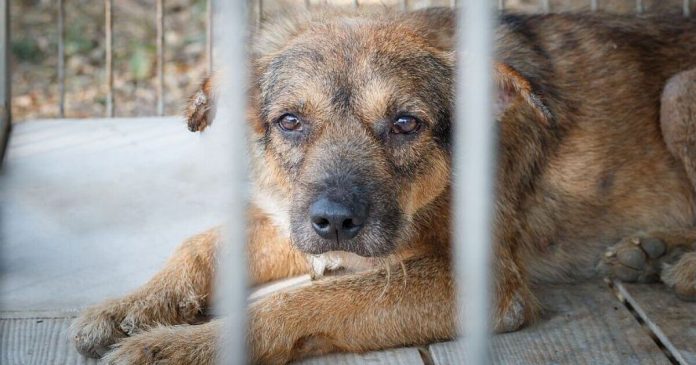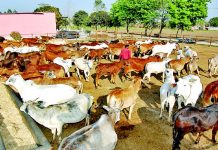This article is written by Indrasish Majumder.
Table of Contents
Introduction
This epithet was added for titillation. For some strange cause, it drew you to this post, and you’re still reading it. Isn’t it true that people nowadays do anything for views? This paper, interestingly, addresses the deleterious repercussions of this very trend. In the last ten years with the advent of social media, the inherent essence of “shock value” to promote content on the internet has increased dramatically. It has affected the social media paradigm in terms of the need for extreme attention among its users. This, and other social networking distortions, have had a significant effect on the rise in people exploiting animals for attention (and for monetary gains, often). It can range from a Facebook video of someone tossing a dog off a cliff to a YouTube influencer beating and spitting on her dog for not abiding by the persona she expects her to put on when in public. Few of these videos incite indignation while some of them are entertaining. Some also have a niche audience that loves reading and watching instances of animal cruelty daily and some people are completely unaware that they are committing animal cruelty when indulging in such an action domineered by their lust for attention.
The increase in motivation to commit irrational actions of unspeakable cruelty among people against animals, for social media influence is discussed in this article, as is the need for legislation prohibiting animal cruelty to evolve and regulate social networking sites.
Case studies from around the world
In May, a teen from Alabama, United States, uploaded on Facebook a video showing himself tossing the 7-month-old dog of his neighbour from a great height into a shallow grove, while saying “This is what happens to stray dogs that follow me.” Despite being charged with egregious torture, the support he got from those with whom he posted the video was startling, with people claiming that it was only “a puppy” and contending “dogs die every day”. Another instance is that of a Korean Youtuber beating and biting his puppy, the video of which despite being reported in 2017 is still online and the perpetrator has not been apprehended.
During a youtube stream, a Youtuber known as Sseungnyangie bit and struck his puppy several times.
The desire to show off in front of a crowd may lead to peculiar attempts for attention and recognition, which could result in blatant harassment videos appearing in your stream more frequently than you’d like. The overused term “any publicity is good publicity” applies in this situation, where individuals can be motivated solely by the desire to be heard by many, which now is possible with slapping a dog and the press of a button. In the 21st century the phrase “to go viral” holds equal importance to your resume as does your school and college grades.
Local cases of cruelty against animals on the internet
Another very obvious way to reach a million people instantly is the display of bravado, masochism, vanity and narcissism on social media. One does not need to look further than Ulhasnagar, Maharashtra, where this July, a man caught a snake and repeatedly, on camera, thrashed it to the ground even after it was dead.
Image: A screen capture of the perpetrator holding by its tail the snake and abusing it.
One may claim that this occurred on or off-camera, but the reality that it occurred in front of a camera and was posted later on by the perpetrator demonstrates the presence of a motivation to demonstrate dominion over anyone or anything. One of the basic five manipulative characteristics is a show of narcissism. McCain et al. found that “grandiose narcissism” was directly related to social media in a study promulgated in an issue of the American Psychological Association. This just goes to show that an increase in animal cruelty, particularly for purposes of exhibition online, has the potential to attract a larger audience and actors.
Social media prohibitions and regulations in India
The purpose of this article is not to make a point or to justify something; rather, it is to start a conversation. Animal rights and animal cruelty policies/laws on social media are inadequate around the world. Despite being called out for his inhumane actions, the Korean Youtuber Sseungnyangie was not prosecuted because there were no established laws. Youtuber Brooke Houts, who uses her dog in funny videos on her stream, inadvertently posted footage of her strapping, kicking, and attempting to spit on her dog because he wasn’t acting the way she wanted him to on camera. After the police completed their investigation, the authorities chose not to prosecute her.
In terms of social media regulations and prohibitions in India, there have been some discussions about restricting TikTok the video-sharing app due to its large adolescent audience base and the possibility for geo-tagging to expose them to traffickers. The nation is no stranger to the consequences of new technologies and social media outlets. TikTok, on the other hand, highlights numerous instances of cruelty against animals and illegal animal battles, the majority of which are overlooked. People geotagging locations and displaying their pit-bulls when calling to the public for engagement in the barbaric practice can be simply searched up by typing in ‘#dogfight.’
Facebook conveniently overlooked tentatively 150 illegal dogfighting sites with over 2000 messages. Matches were declared and graphical material was shared. Lady Freethinker, an animal rights organisation, has presented the site with the findings of a three-month study, claiming to have found 2,053 videos in which animals were intentionally abused for amusement or were seen to be in extreme psychological trauma, physical discomfort, or dead.
The videos, which were shared across nearly 150 platforms and received 1.2 billion views, were found to be in breach of YouTube’s community standards, according to the charity. “YouTube needs to do a better job of tracking and deleting all videos that violate its terms and conditions, alerting local law enforcement to an illegal content, and keeping channels responsible for their conduct with suspensions and terminations,” Lady Freethinker owner and director Nina Jackel said.
According to the charity, the report turned up footage of animal fighting, animals being devoured alive, and being hunted using inhumane methods. It also discovered six YouTube channels with 17 videos of “fake” or “falsified” animal rescue missions with 41.7 million views. The contentious videos depict creatures such as cats and dogs being put in artificially created “dangerous” conditions in the wilderness, such as near predators, alligators and snakes, for instance, only to be “saved” just in time by a person.
YouTube removed 185 of the 2,053 videos found in Lady Freethinker’s study between April and July 2020, contributing to just 136.5 million out of 1.2 billion views. The organisation plans to start a petition demanding that YouTube delete all videos that violate its community standards and take concrete measures to properly track and remove videos that promote animal cruelty. YouTube said it had requested all of the inquiry’s information and that any material that violated its rules would be deleted. “YouTube’s community guidelines forbid any violent or gory material designed to shock or disgust viewers, including the needless infliction of harm on animals,” a YouTube spokesperson confirmed. We delete videos and comments flagged by our group that violate those policies regularly, and in many cases, we terminate the accounts of users who break our rules.”
How to identify and report online animal cruelty?
The following section of the paper shall enumerate the steps to file a complaint of animal cruelty and detail the entire process that takes place after a complaint of animal cruelty is lodged.
First, find out who in your area, county, or state is in charge of the investigation and implementing anti-cruelty laws against animals, your local “humane society” for instance, “animal control department”, “taxpayer-funded rescue group”, or “police precinct”. If you’re having trouble locating the appropriate organisation, try and connect with your local police station, shelter, or animal control service for the appropriate directions.
How to communicate cruelty to the authorities?
Until filing an animal cruelty complaint, try to collect the following information:
- To provide to police departments and law enforcement, a succinct, written, accurate report of your learnings, including estimated time and dates wherever plausible.
- Photographs of the scene, the animals involved, and the immediate environment. Take care not to endanger yourself! Entering another man’s property without their authorization is not advisable, and be cautious around unknown animals that are scared or distressed.
- Furnish the contact details of other individuals who have direct information about the unsafe environment concerning animals to the law enforcement, if possible
- While one can submit an anonymous statement, sharing your contact details is advisable. When there are reliable witnesses able to back up the report, better, and, if required, appear in court, the following steps increase the chances of the perpetrator’s conviction.
- Keep track of who you spoke with, what you spoke with them, copies of any records you furnished to law enforcement or animal services, and the substance and result of your conversation. Make a friendly follow-up call to ask about the status of the inquiry if you do not hear back from the officer appointed to your complaint within a reasonable amount of time.
Animal cruelty : how to spot it
When on one hand an aggressive, passive, or afraid animal may seem to be a sufferer of violence, it is impossible to discern whether an animal has been exploited exclusively based on his/her actions. To decide whether or not the animal requires assistance, it is best to inspect the animal and its surroundings, as well.
Reporting cruelty on the internet
If you see cruelty portrayed online, you can report the site or photos in question by following these steps:
- By visiting www.whois.net and searching “whois” on the respective website, therein you can get the basic information.
- Inquire with the site’s “ISP (internet service provider)” about the content you find objectionable.
- If you have evidence that the website in question is showing or supporting illegal acts, you can contact one or more of the following organisations and notify them of the circumstances.
- Regional law enforcers and, if the animal is believed to be in imminent danger, the alleged offender’s regional FBI branch (“local” in this instance simply implies the region from where the domain originates) —the address of the registrant would be provided to you by “whois” search.
- Your neighbourhood shelter for animals or “humane society”, that has the authority to enforce municipal “animal welfare laws”.
- Since animal cruelty often results in unhealthy or unsanitary conditions for humans, the “local city/county Health Department/Board of Health” is a good place to start.
- A complaint can be lodged before “The Internet Crime Complaint Center (IC3)” but only if what you’ve witnessed involves money (i.e one person trading, purchasing or selling, offering an illegal service)
- Regional and national media organisations may facilitate rapid disciplinary actions by using their influence to draw people’s attention to an animal cruelty case.
What happens after you register a complaint with the IC3?
- Your report ID and password, as well as a connection to a region on “the IC3” websites wherein one can access the information provided by you and furnish any ancillary information, will be emailed to you by IC3.
- IC3 will thoroughly check the report and assign the same to a relevant federal, state, regional, or international enforcement agency after receiving it.
- Any report submitted is forwarded to one or more criminal justice or regulatory bodies with authority over the case. The report could then be entrusted to an investigator. Your case may or may not be reviewed by IC3.
How does the law treat animal cruelty on the internet : a study of us jurisprudence
In the US, the Internet is primarily regulated by federal law due to the potential of data communications to cross state lines. It is important to improve federal legislation on Internet animal cruelty. Only a few federal laws expressly discuss the problem at the moment:
The Crush Act (Public Law 106-152) makes it illegal to display inhumane acts and sexual exploitation of animals for interstate commerce. Offenders could face up to five years in jail or a substantial fine if charged. Before this statute takes effect, two conditions must be met: 1) There must be real violence, and 2) the concerned site must plan to market the photographs beyond state borders. Implying, under this legislation, a webpage can lawfully exhibit images showing animal cruelty or sexual exploitation as long as it does not charge viewers for viewing or market the photos in any other way. In 2005, a federal district court in Virginia handed down the first sentence under this act.
“The Animal Fighting Prohibition Compliance Act (P.L. 110-27”) enhances law enforcement’s potential to tackle animal abuse by making interstate trade, exports and imports associated with animal combat practice, including commerce of cockfighting firearms, a criminal offence. Perpetrators of this federal statute face up to three years in jail and a fine of up to $250,000 for each infringement.
“The Computer-Assisted Remote Hunting Act (H.R. 2711/S. 2422”), initiated by “Rep. Brad Sherman (D-CA) and Sen. Sheldon Whitehouse”, is a proposed federal bill (D-RI). It aims to make it illegal to intentionally make a “computer-assisted remote hunt” open (using a computer or any other device, software or pieces of equipment for purposes of administering the discharge or aiming of a weapon to hunt and harm).
Laws against animal cruelty in India
Gandhi once said “the greatness of a nation is judged by the way it treats its animals” long before animal activism became a global movement and animal laws were enacted in India in their present form. Yet, 74 years down the line, in India, it is not uncommon to see crassly mutilated bulls carrying carts full of massive weights while being beaten continuously if they resist. People hurling stones at animals on the streets for amusement, and, not to mention, all the ‘taming’ contests, battles, and cart competitions in which animals such as cows, bulls and hens are treated like toys. The irony is in a world characterised by development (rational and technological) and globalisation people are increasingly losing out on their ethics and morality, not only towards one another but also these helpless creatures.
Many laws have been enacted by the legislature to combat animal cruelty, the most notable of which is “the Prevention of Cruelty Animals Act, 1960”, “Wildlife Conservation Act, 1972,” enacted to safeguard flora and fauna. However, the saga of internet cruelty towards animals appears to be only increasing. The following section of the paper shall discuss the laws on animal cruelty in India and the loophole that exists within it, fomenting the ground for an ever-rising trend of cruelty towards animals on social media.
The Animal Cruelty Prevention Act of 1960
According to the “Prevention of Cruelty to Animals Act of 1960”, the following are some examples of animal abuse :
(a) Beating, punching, tormenting, and inflicting excessive harm and suffering on any pets are all prohibited under Section 11(1)(a).
(b) Deploying any animal that is unfit to be working because of its age or an illness, and then forcing it to labour;
(c) Deliberately and unjustifiably prescribing any harmful medication or drug;
(d) Transporting or bringing in or upon any automobile in a way that causes it excessive pain and distress;
(e) Trapping/constraining any animal in a cage or container that is not large enough in height, length, or width to allow the pet to move;
(f) Keeping any animal confined or tied for an excessive period;
(g) When the owner, forgets to walk and exercise his/her pet ordinarily chained and housed within confines;
(h) Being the owner of any pet fail to provide sustenance, water, or housing;
(I) Being the owner, keeps the dog constantly chained or within close confines;
(j) Abandons the animal in any circumstance likely to cause it suffering in manner of physical e.g. pain, thirst or starvation.
(k) Sells or has in his custody any animal that is in distress as a result of castration, malnutrition, starvation, congestion, or other unhealthy treatment without a reasonable cause.
(l) Castrates or murders any animal (such as stray dogs) in an inhumane manner e.g. injecting strychnine into the heart;
(m) For entertainment purposes only, constrains or contains certain species (including binding an animal as a lure for any predator as a part of an experiment) Provoking animals to fight or be baited by another animal.
(n) Organises, holds, uses, or manages any site for animal fighting or trying to bait any animal, or allows or provides any venue to use it for such practices ;
(o) Participates in games of shooting match in which upon being freed from confinement animals are shot.
Cruelty to animals : a crime punishable by law
When an animal is abused or subjected to violence in any of the ways specified by “the Prevention of Cruelty Animals Act, 1960”, the perpetrator has to pay a fine of up to Rs 50, and if it is a subsequent or a consequential offence performed within 3 years of the first, the person has to pay a fine of not less than Rs 25 but up to Rs 100, or with imprisonment for a period which can extend to 3 months. If the criminal owns a vehicle, it will be seized if he or she commits a second offence, and the individual will be barred from owning animals for the rest of their lives.
Wildlife Protection Act,1972
The legislation is ostensibly for the protection of wild animals and birds, entailing provisions to protect their rights and become a voice for the voiceless in the process. It prohibits sacrificing animals, with Section 39 of the Wildlife Protection Act criminalising any cruelty to animals and punishing violators under Section 51 of the act. It also prohibits the caging of any bird. If anyone wants to hold a legal feathered pet, they must comply fully with “Section 11 of the Prevention of Cruelty to Animals Act, 1956”. Police powers: “Section 50 of the Wildlife Protection Act, 1972” approves a cop to arrest any individual without a warrant if an instance of cruelty against the animal is proved.
A citizen needs to be aware of the law before filing a complaint. For example, a donkey should be loaded with only 35 kgs of weight at one time; the permissible loading capacity of a truck is 4 buffaloes or 40 sheep/goats. Anything over and above it is technically illegal under the law. One needs to learn to make a distinction between cognizable and non-cognizable offences outlined in the PCA act 1960. “Section 43 of the Criminal Procedure Code” empowers every citizen the right to perform a ‘citizen’s arrest’ i.e the right to arrest a person who has committed in their presence a ‘cognizable’ offence, an offence for which the offender can be arrested without a warrant
Cognizable offences under PCA Act 1962 include the following:
- Under “Section 12 of the PCA Act, 1962”, Transducing oxytocin into cows/milch animals to increase milk production capability – which is harmful to the animal’s wellbeing – or allowing such a procedure to be conducted on the animal he/she ‘owns’ is a criminal offence. This can, however, be one of the most common tactics employed by local legal and illegal dairy farmers across the nation.
- Under “Section 11(1)(l)”, castrating or killing any animal, namely stray dogs, through overly barbaric practises such as poisoning.
- Under “Section 11(1)(n)” Organizing, maintaining, or utilising any venue for animal fighting/baiting in exchange for cash.
- Under “Section 11(1)(o)” promoting or participating in any shooting game or match in which animals are rescued from captivity for shooting/killing.
Policy suggestions to report cases of internet animal abuse
In terms of reducing instances of barbarism towards animals the government has an imperative power, that is, if the penalties for such offences can be made more severe, the general public will want to do better and will not savagely kill innocent animals. As a result of the need to update the old legislation, “the Prevention of Cruelty to Animals Act” was updated and renamed “Indian Animal Welfare Act in 2011” and recently it has been proposed by the Modi government that the punishments prescribed under Section 11 of the PCA be increased by 120 per cent. Despite such a vast list of regulations, the push can only come when people understand and appreciate the right of all living creatures to bodily entitlement.
Another suggestion for improving the system is to create and develop “the Society for the Prevention of Cruelty to Animals”, a non-governmental organisation that can work separately from the state. There is also a need to guarantee that the State Animal Welfare Board functions properly, given the fact that many states lack such a committee, and where one does exist, it is inactive.
Additionally, as the legislations and its ancillary provisions mentioned above typify, the judiciary in India is yet to incorporate provisions on internet cruelty against animals. The author, while stressing the importance of incorporating such a provision in the current animal welfare legislation, in the conclusion section of this paper shall enumerate the steps one can take upon seeing a disturbing image on social media on animal abuse to report and prevent the same in an extra-judicial manner. When you come across a troubling picture that appears to depict animal cruelty, you should:
- Instantly download the photos and gather as much information as possible about the individual that posted the picture, including the poster’s username, the entire article that was shared with the photos, and any remarks that were uploaded with the photographs. Just use screenshots if you can’t download the photos because they contain essential data. Be as truthful and accurate as possible when describing the animal crime in your complaint. Give exact dates, times, places, and, if applicable, photographic documentation (while remembering to keep a photocopy with yourself). You can also make note of all the officials you deal with so that even if they refuse to listen, you can escalate to the next tier of the hierarchy and seek justice for the animal(s) you’re advocating for. Obtaining a vet’s certificate for the animal in question will also serve as good documentation and backup. The physical state of the animal, outward manifestations of animal brutality, cruelty during their training and exercise, accommodation (size of cages), overpopulation, the form of travel, sanitation and hygiene should all be considered when disclosing an instance of animal abuse.
- DO NOT request that the photographs be removed from the website. “Most people who aren’t in law enforcement are surprised to hear that keeping such offensive material up is the best course of action in the short term,” Scott Heiser of the ALDF (Animal Legal Defence Fund) said in a comment. However, law enforcement agencies will need access to the photographs as evidence, so being silent in the short term will benefit one in the long run in convicting the perpetrator.
- Don’t comment on the picture or the poster’s profile, and don’t share the message. This could give them the impression that you want to expose them to criminal justice machinery, and you don’t want to jeopardise the inquiry. For example, there was so much criticism after veterinarian Kristen Lindsey posted a picture on Facebook gloating about killing a cat called Tiger with a crossbow that she had to delete her account. In the long term, this hurts the prosecution because investigators had a hard time finding facts.
After that, you’ll be able to proceed with the case to the police.
Take copies of the evidence you’ve gathered to the police station from the area from where the picture/video was released. If this isn’t an option, take it to the nearest police station. One can also contact the local state “SPCA (Society for Prevention of Cruelty to Animals)/Animal Welfare Organisations”. Though an NGO cannot enforce the law as an organisation, they can connect you with an animal rights activist who can file lawsuits and bring awareness to certain issues through legal or media-based involvement. Animal rescue agencies and animal clinics may be called to help the distressed animal. Either way, be it a police station or an NGO, they’ll almost certainly ask you to submit a document, and this is where things get a little technical.
Include a specific request in the report that:
- An official submits a detailed retention request to the host website. This will aid in the preservation of facts.
- The department is conducting a thorough investigation into the crimes depicted in the photos you found.
- You are aware that you might be called to testify.
Your job is effectively completed with the steps mentioned above, but the police’s work is just beginning: they’ll work on obtaining a warrant if they think the images indicate a crime in progress. As the case review progresses, be sure to demonstrate your commitment to helping the investigators. Your ability to help with the case is crucial to redressing the injustices that have been done to animals. Last but not least, be careful. “People are always shocked by the length of time it takes to conduct an investigation,” Heiser said. “It will take some time. Perseverance, on the other hand, equals a high-quality prosecution, which is what wins these cases.”
Article 51 A (g) of the Indian Constitution mandates a fundamental obligation of compassion for all living beings on every Indian citizen. But, from conducting pointless experiments on animals in skincare products labs to slaughtering one animal in front of another in an illicit abattoir, from having cockfights to boiling alive monitor lizards to produce oil from their skins, humanity does it all and does it ruthlessly. It is up to all of us who are conscious and educated to put our conveniences aside for the moment and become the voice and conscience for these deaf, flummoxed animals as they fight the all-powerful man in a desperate, helpless struggle. What makes cruelty to animals fundamentally unforgivable and immoral, when compared to human cruelty? Humans can still complain when they are treated cruelly; they have a mouth to lift an alert and hands to strike back. Unfortunately, animals lack such alternatives, leaving them vulnerable in the face of the brutality humans inflict on them, whether for their amusement, profit or to satisfy their masochistic urges!
Fyodor Dostoevsky once said that “no animal could ever be as cruel as a man, so artfully, so artistically cruel.” One would agree to it as Advocate Anjali Sharma concludes, “Perhaps humans are the worst animals ever born on this planet” “I don’t believe in the concept of hell, but if I did, I think it would be filled with humans who are cruel to animals”- Gary Larson.
LawSikho has created a telegram group for exchanging legal knowledge, referrals and various opportunities. You can click on this link and join:
 Serato DJ Crack 2025Serato DJ PRO Crack
Serato DJ Crack 2025Serato DJ PRO Crack













 Allow notifications
Allow notifications



